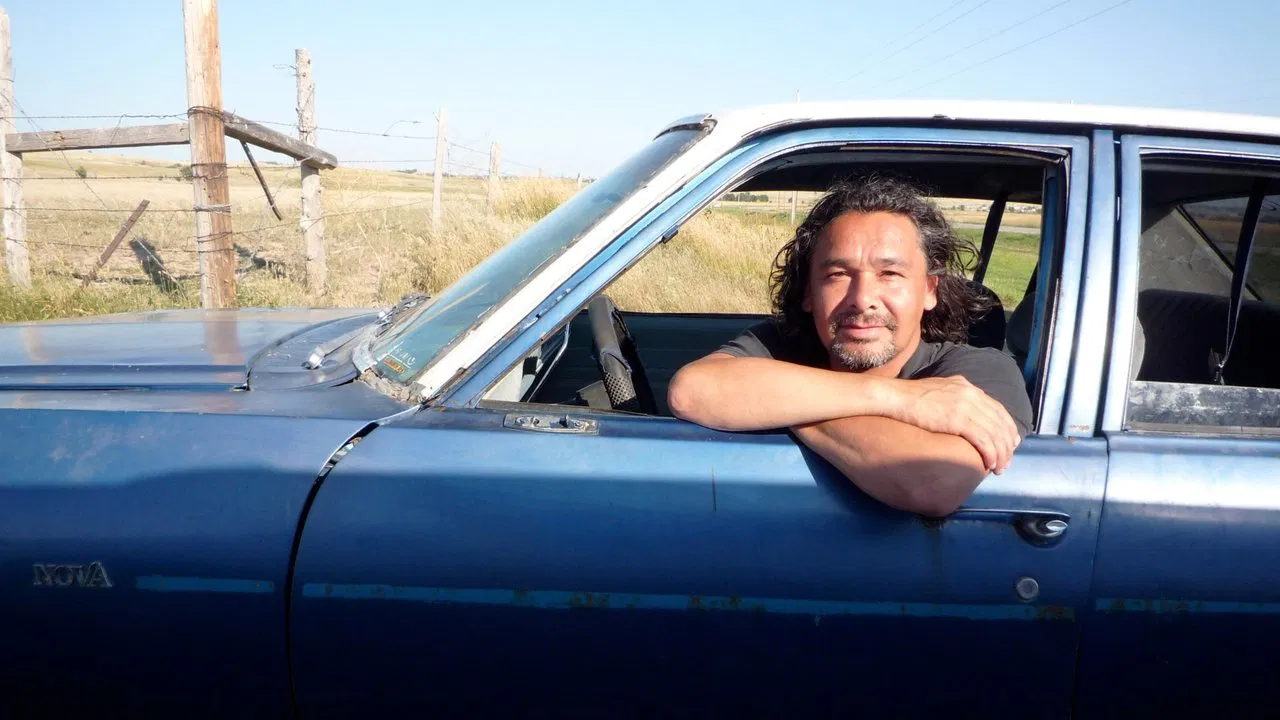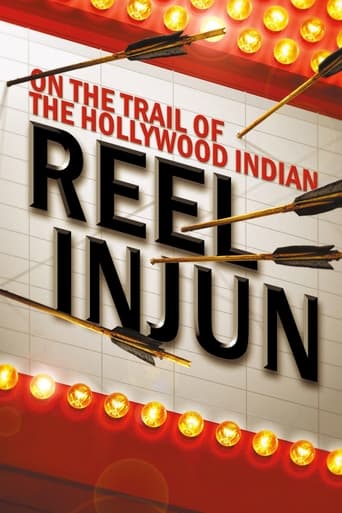

Growing up in Waskaganish, Cree filmmaker Neil Diamond remembers playing cowboys and Indians, but having to choose a side meant all the children preferred the role of cowboys. Myths and assumptions concerning Native Americans have been around for ages; however, the documentary Reel Injun addresses these falsified beliefs. The film runs 86 minutes long as Neil Diamond visits and interviews Native people and critics. Traveling in a "rez car," also known as a reservation car, he brings our attention to the effects of Hollywood film making on a grand scale. Gullible movie audiences believed in the representations of Native Americans in numerous films. Prior to watching Reel Injun I can admit to not knowing much about America's first peoples. During the late 1800s, society was fascinated with Native Americans, making them part of the first themes to be captured on film. As a result, the illusion of Indians began impacting the world. Myths caused native people to be seen as characters instead of being treated as human beings. Not only is this treatment unjust, but it is the catalyst leading people to believe all Native American mimic mythical creatures, because of their assumed bravery and outstanding horsemanship. The myth associating Indians and horses might have arisen from the Crow people in Montana, who are esteemed riders throughout North America. The relationship between the Crow tribe and their horses is very spiritual. Rod Rondeaux in particular, became a stuntman because he was dissatisfied with seeing white men pretending to be Indians on horses. Rondeaux has starred in the TV film Crazy Horse, Wild, Wild West, and many others. He has become one of Hollywood's highly ranked stuntmen and is representative of Native Americans who have been able to make stereotypes disappear. The 1930's film The Silent Enemy featured real native actors, allowing Chief Buffalo Child Long Lance to become a preeminent warrior. This period was marked by segregation and Long Lance knew the only way to further his career was by disguising his multiracial background: Indian, African American, and European. Because of his ethnicity, Long Lance developed a new image for himself, one that was solely Indian. When his secret came out, his career was ruined because of his falsified allegation of belonging to a tribe. On March 20, 1932 Long Lance committed suicide after battling alcoholism for years. This is reflective of a time where prejudiced attitudes affected job opportunities. Long Lance was born after the Reconstruction Era had ended and when the lynching epidemic occurred. Similar to Long Lance and known by his stage name "John Wayne," Marion Mitchell Morrison illustrated the image of the cowboy during his era. Most of Morrison's movie roles were Westerns, making it easy to associate the persona of John Wayne with mistreatment of the Indians. Louise Erdrich's poem "Dear John Wayne" expresses the effects of racial biases that were widely accepted in American society. The lines "How can we help but keep hearing his voice, / the flip side of the sound track, still playing; Come on boys we got them / where we want them, drunk, running" shows how degrading characters like John Wayne were to Native Americans. John Wayne was shown as the fearless cowboy who conquered the natives. Throughout American history, people have associated headbands and feathers with Native people, when in fact they never wore them. Hollywood began using headbands on actors to ensure wigs would not fall off during stunts. This has become one of the many symbols attached to Native Americans through the influence of Hollywood. With an evolving society, it is difficult to define the ethnic identities of a group. The disadvantage with cinema is that directors can choose how they want to represent individuals or groups of people. These messages can translate incorrectly, allowing for the continuation of prejudices.Despite being presented as savages and mistaken for hippies, Native Americans have come a long way in Hollywood. The movement that began in November 1969, when indigenous protesters from San Francisco occupied Alcatraz Island, revitalized the spirit of Natives, and filmmakers finally owned up to their mistakes. The 90's can be considered the rebirth of Natives in cinema because their voice emerged. Movies like Smoke Signals and Igloolik accurately tell Native American stories.Reel Injun provides viewers with a truthful portrayal of the many years of damage caused by film making and will make you question Western favorites held so close to heart. Interviews with natives and a look into various movies throughout history will make you thankful a documentary like this exists. Aiming to rid society of wrongheaded myths, director Neil Diamond thoughtfully delivers just the right amount of critique, leaving audiences with awareness of Native American life.
... View MoreREEL INJUN does Injustice justice: we see early examples of White Men in Blackface, in Black and White- and then White Men in Redface, in Color(ed?)... I always get a big kick out of seeing actors who clearly AREN'T "American Indians" (which is an oxymoron) pompously spouting ridiculous dialogue. The translations shown in REEL INJUN are hilarious. I never knew that "Iron Eyes" Cody was Sicilian; a bit of a revelation, that. That he took the Part to Heart was touching: you can be who- or what- you WANT to be in this life. The juxtaposition of Reel Injuns with Real World Injuns brought the mixed message(s) home quite clearly (one can't look at the horrific photos of the original Massacre at Wounded Knee and NOT understand the dichotomous yawning chasm between Reality and Reel "reality"). My favorite line in the movie was delivered by the young comic: A group of White Men ride up to an "American Indian" and say, "Where road go?" The "Amerind" replies: "Road STAY. YOU go." I heard somewhere that The Emancipation proclamation, which freed slaves of African descent, didn't apply to Native Americans: it was still legal to own Indian slaves...
... View More(I originally intended this to be a discussion post, but I figured it was more of a review, so that's why it's here) I came here hoping to see via the MovieConnections which films were referenced, so I could remember to seek out certain ones that intrigued me, particularly from the silent era. However, this film doesn't seem to get many viewers, and that section remains empty so far.This film can currently be seen on CBC's website for "The Passionate Eye", in the section for viewing online. I'm not sure how long it will be there, but it's been there at least for a week or two. There are some annoying and painfully loud commercials inserted in it (if Dove thinks this will make me their customer, they should be aware it's having the opposite effect on me, and I'm switching to store brands) but if you can ignore those, it's a good way to see it. (EDIT: Actually, this is NOT a good way to see it, if you have any other choice. They seem to have cut about 10-15 minutes from the film, as they appear to have done for most or all films they currently have online. There's no excuse for chopping up someone's work and representing it as the real thing. Shame on them.)I agree with both of the previous IMDb reviews. I was very surprised to learn about the varied history of native American "Injuns" on screen. But at the same time I felt that the narrator posed questions he didn't answer, and the travelling metaphor simply didn't work. Still, I give it an 8/10 for being crammed with information. I think with some additional work, it could be re-edited and expanded into a new film that could be 9 or 10.I've seen almost no films prior to late 1960's, having native American characters. But I have seen some of the more recent films they mentioned. I did like One Flew Over the Cuckoo's Nest, Dances With Wolves, Smoke Signals, and Black Robe, but did not think much of Little Big Man, and I was bored almost to death by Atanarjuat (The Fast Runner). That one is probably loved for historical purposes, and a lack of competition, but it's bad cinema.Probably the best film I've seen where the main characters are native American would be Ce qu'il faut pour vivre (The Necessities of Life). But maybe it was too recent to be included in Reel Injun.
... View MoreThis native-directed documentary about Hollywood portrayals of First Nations through the years is appealing, good-humored, and watchable, and will be a valuable educational tool. However, it would have been more valuable (and may be yet; this screening was apparently not the final cut) if its various flaws were addressed. There is a sense throughout of the film biting off more than it can chew. The "journey" framing device - in which Diamond heads out on the road to visit various real-life locations of cinematic lore - works case-by-case, but there's no through line and Diamond isn't on screen enough to establish a presence. While one sees the need to address on screen portrayals' relationship to the realities of early colonialism, 70s AIM activism, macho Indian-themed summer camps etc, these byways reduce the space for the central discussion of the movies themselves. Instead things drift toward pat decade-indexed generalizations, so that in the 70s Billy Jack leads directly to Wounded Knee - quite a stretch! While one can readily understand that native viewers don't much like John Ford westerns, presenting the racist cowboy of The Searchers as a direct expression of the filmmakers' attitudes is asking for trouble. And if you're going to show Little Big Man to an elementary school audience to gauge their reaction, then SHOW US the damn reaction! The best talkers of the film are activist John Trudell and comic Charlie Hill, but as insightful as they are, the native stunt man and costume designer do a better service to the movie's themes. (And please spare me the Robbie Robertson star turn!) And in the end everyone lives happily ever after in rose-colored Celluloid Closet style. All that said, though, the film also reveals the existence of a self-portraying Native cinema in the silent era, translates some hilarious Lakota profanity from a vintage western, and highlights the tragedy of the secretly triracial early movie star Buffalo Child Long Lance, among other revelations. Its moments of insight earn it a more than passing grade in spite of its failings.
... View More